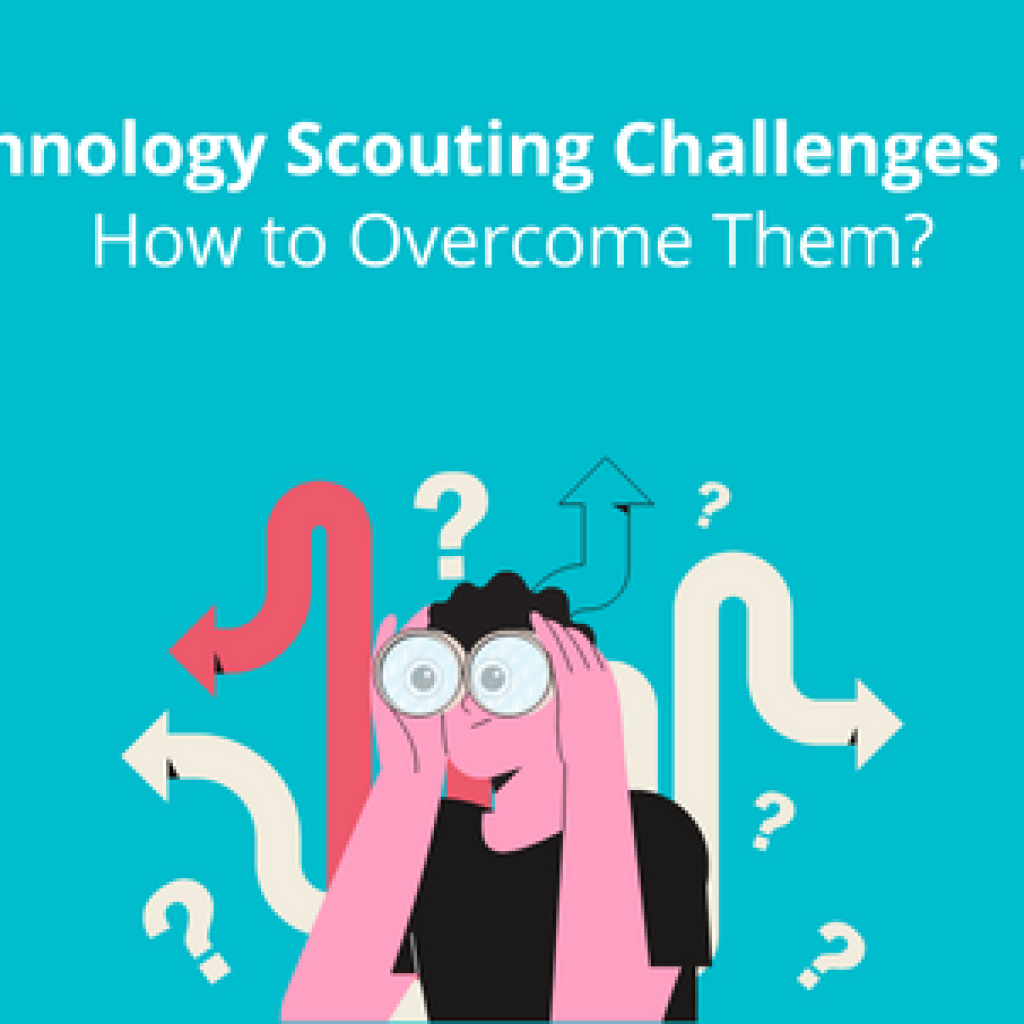With the rise of Standard Essential Patents (SEPs) in India and the growing interest of Chinese companies in this market, the question looms: “Could India be the next patent hub for Chinese companies?” To make this a reality, India’s IP landscape must be adjusted to accommodate global innovators, as several laws still require tweaking.
In this episode of GreyB Talks, Dhruva Sood discusses how India’s evolving IP laws can serve as a launchpad for Chinese companies aiming for business expansion. Joining Dhruva are three experts:

Muzammil Hassan, Chief of Patent Licensing and Monetization at GreyB, with over 11 years of experience

Hexi, Licensing Manager at PurpleVine IP, who has extensive knowledge of SEPs

Vivian Wang, Director of Licensing at PurpleVine IP Group, with over 15 years of experience in litigation and licensing.
The episode covers:
- The growth of patents in India, especially SEPs, and the increase in related lawsuits.
- The difficulties Chinese companies face with India’s legal system and IP rules.
- The rising interest of Chinese companies in the Indian market and the key points to consider in licensing deals.
- How artificial intelligence (AI) affects licensing and setting fair and reasonable rates.
- Predictions for the future of SEPs in India
Through their discussion, the guests provide valuable insights into the changing IP landscape in India and offer practical advice for companies looking to file patents and expand in this market.
Listen to the complete podcast featuring Dhruva Sood (Host of GreyB Talks), Muzammil Hassan (Chief of Patent Licensing and Monetization at GreyB), Hexi (Licensing Manager at PurpleVine IP), and Vivian Wang (Director of Licensing at PurpleVine IP Group)
Short on time? Well, here are the highlights from the chat-
The Growth of Patents in India and the Rise of SEPs
Dhruva: Muzammil, can you tell us what’s happening in the patent world in India?
Muzammil: India is growing in the world of patents, particularly with standard essential patents (SEPs) like those for 5G technology.
I’m really proud to say that we recently published a study in which we manually checked more than 20,000 patent families against the 5G standard. So, it was a 5G standard essential patent study. And I’m proud because India is coming very close to the top five countries where these patents are being filed.
In fact, 40% of these patent families include patents filed in India. Now, that’s a very interesting stat. It wasn’t if you look at the similar data in the 4G standard, the 3G standard, or any of the other standards in the past.
Now, what does it suggest?
Even though our filings in India are not as high as in countries like China and Europe at this point in time, it’s a big step forward.
This implies that companies think India is important, just like any other big market, and they trust India’s IP laws to protect their inventions.
And most importantly, India is improving at creating and enforcing strong IP rules. It’s a long journey, I understand that, but India is on the right path.
Increase in Litigation Cases Involving Chinese Companies in India
Dhruva: Muzammil, you mentioned filings have increased. How’s the litigation scenario, specifically concerning SEPs?
Muzammil: If no litigation is happening, just the filings, then there is no point in filing more patents when you see no return. The SEP lawsuit scene in India is heating up. You might have heard about the recent Ericsson vs. Lava case, but that’s not the only one. In the past few years, more than seven to eight big cases have been filed, and most of these cases are against Chinese companies like Xiaomi and Oppo, which have significant markets in India. Even in the Ericsson vs. Lava litigation case, you see that Lava lost that case. This indicates that the jurisdiction or the IP courts here are not favoring local companies; they are law-abiding.
They understand what the law and patent say, which company is violating it, and which company should be awarded damages. Another lawsuit against Lava has also been filed, which is a testimony that India’s IP courts are doing well and that we are moving in the right direction. Four IP courts, solely focusing on IP matters, have been set up in New Delhi, Kolkata, Gujarat, and Madras.
This is a big step forward, reducing the waiting time for IP matters to be resolved. These new courts could encourage more foreign companies to invest and be interested in filing more patents and litigations in the Indian market. Again, it’s the right direction but it is a long journey.
Indian Companies’ Reaction to the Changing IP Scenario
Dhruva: Great. You mentioned that a lot of SEP developers are filing in India. We are seeing litigations where global companies are being litigated in India. How are Indian companies reacting to this entire change of scenario, this improvement, and the focus now coming to India and with the Indian court you mentioned?
Muzammil: We haven’t seen many Indian companies filing patents or SEP patents, but things may change. They may be planning to file more patents, especially for newer technologies not yet in the market, such as 6G.
For example, if you research, you’ll see that Jio publishes many articles. They are doing a lot of research on 6G standards, and I think they also participate in the 3GPP meetings. Overall, there’s a long way to go. India is definitely moving in the right direction regarding SEPs and IP laws.
Many companies have not yet started filing patents in these areas. But in the future, as Jio is stepping up, we might see more and more Indian companies trying to manufacture in India and sell outside India. Or companies gathering or trying to convert more markets in China, Europe, and the US. They might be willing to protect their IP, and why not in India?
More companies could enter in the future, but only a few are doing it right now.
Chinese Companies’ Interest in the Indian Market
Dhruva: Hexi, why do you think India is a lucrative market right now? Why is it being preferred as a jurisdiction?
Hexi: Yeah, there is indeed more and more patent litigation happening in India against Chinese companies. And a lot of people are asking why this country? I think there may be a couple of reasons. First, it’s the market reason. We all know India is the biggest focused market with a huge consumer base. Not only Chinese companies but also global companies have their local manufacturers and operations here. So, it’s understandable for patent holders to come to this country to file litigation for higher repayments and to protect their market share.
It’s interesting that Indian courts have shown a slight tendency to favor patent holders, at least from the cases we have seen so far. This is very attractive, in addition to the new courts India has been setting up, which help streamline litigation procedures and allow patent holders to get a quicker decision. Vivian, do you have more comments on this?
Vivian: Yeah, like Hexi just mentioned, India has emerged as a huge market for tech products and services, especially for telecommunications and electronics. Those areas are very important for SEP, and SEP disputes are also very hot in those areas. Some recent case law in India gives a sign to SEP holders.
The Indian court has more and more knowledge. The SEP holders’ injunctive relief is quite strong, especially for a preliminary injunction. We can probably see Indian courts being defined as active or strong IP jurisdictions.
Challenges Faced by Chinese Companies in the Indian Market
Dhruva: Vivian, based on your experience working with Chinese clients, what do you think are these companies’ main challenges in India?
Vivian: Nowadays, I think the biggest challenge for most Chinese companies is that we’re unfamiliar with the Indian legal system and IP law. This reminds me of the feeling 10 years ago when I was at ZTE, facing litigation in the US and European countries. Over the years, we have seen many case laws established in the US and European countries.
We also did lots of research, monitoring and following those cases. But for India, it’s just like what we did 10 years ago. We’re unfamiliar with the IP landscape in India and don’t know how things work or the courts’ attitudes towards SEP holders and implementers.
Although, as Muzammil mentioned, there is some high-end case law in Indian courts, there is still very limited information publicly available, making it hard to track case details.
The Need for Information and Transparency in the Indian Legals
Muzammil: It reminds me of a conversation I had at IPBC. Someone asked the licensing head of Nokia if they would prefer to go to the Indian market now, and the surprising answer was that they would prefer to go to the Brazilian market instead. Even though India seems like a big market, we don’t know much about the IP considerations here. We don’t know how the IP law works, and another problem highlighted was that in India, it usually takes a lot of time, sometimes five to seven years, to get a case moved to the next stage or get a verdict. Now that new IP-focused courts are being set up, this may change.
But unless India starts giving more information about what’s happening behind the scenes of a particular case, it will be difficult for foreign companies to invest because litigation costs a lot of money. It’s also an investment, so if you want people to invest in litigation in India, we should start talking more than what we are doing right now.
Vivian: That’s why we need what GreyB provides because that data is important for Chinese companies to make informed decisions. We need those data to have a clearer SEP landscape in India.
Major Industries Facing IP Challenges in India
Dhruva: Thank you for highlighting those challenges, Muzammil and Vivian. I hope there will be changes and improvements in the coming years as the system grows. Now, Vivian, which major industries are more focused on and facing IP challenges in India, and how is PurpleVine helping these companies overcome some of these challenges?
Vivian: Definitely, I still think telecommunications and electronics are major concerns. Historically, these sectors are hotspots for SEP disputes. With the advancement of IoT technology, SEP disputes have expanded to new areas, such as vehicles, medical devices, thermometers, and point-of-sale machines that need connectivity. This will undoubtedly make IoT a new battleground for both SEP licensing and litigation.
Regarding what PurpleVine can do for these companies, we have extensive experience handling international disputes with numerous clients. We have a strong network of legal resources, allowing us to get involved very early and provide timely, comprehensive advice. When facing licensing and litigation, we help our clients manage the entire process smoothly and develop a comprehensive IP strategy aligned with their business goals. Additionally, we have sophisticated mechanisms to help clients manage their legal expenses effectively.
Differences in IP Challenges in India vs. Other Jurisdictions
Dhruva: Thank you for sharing that information about PurpleVine and how they assist clients in overcoming challenges, Vivian. Hexi, based on your experience, how are the challenges in India different from those faced by global companies in jurisdictions like China, Europe, and the US?
Hexi: Compared to well-established jurisdictions like the US, Europe, and even China, the biggest difference in India is still the difficulty in obtaining information for Chinese companies. This includes not only general information but also patent data. Over the past years, retrieving patent data from the Indian office has been challenging, especially for companies with limited resources. However, the Indian patent office has made much progress in digitalizing data, making it more publicly available. Our role is to help clients connect with local resources and respond to these challenges more effectively.
Dhruva: Thank you, Hexi. Muzammil, do you want to add something?
Muzammil: Yes, an interesting stat comes to mind. When we talk to our clients, whether US-based, European-based, or Chinese-based, an average of 20% often discuss the Indian market with us. They ask whether they should file more patents in India, how GreyB could help, or how to proceed with litigation in India. Five years ago, this number was zero. It’s a positive change, showing increased interest in the Indian market.
So, Vivian and Hexi, how often do your clients discuss India when discussing licensing or litigation? Is it once in a while or more frequently?
Vivian: It’s hard to give a specific number, but we do notice and discuss the Indian market more frequently now. Clients often ask us for advice on IP laws or cases related to India. When conducting licensing, we’ve noticed some licensors and patent holders thinking about enforcing their patents in India.
Hexi: Yes, we see this trend as well. Licensees and implementers are reactively seeking knowledge about the Indian IP landscape.
Muzammil: That makes sense from both reactive and proactive perspectives. The positive aspect is that people are starting to understand and talk more about the Indian market. This increased interest often leads to more investment in the long run.
Vivian: Currently, most Chinese companies are reactive, responding to actions from other parties. However, I believe they will act more proactively in the Indian courts in the future.
Muzammil: Interesting, very good to know. Over to you, Dhruva.
Considerations in Licensing Negotiations and GreyB’s Role
Dhruva: Thank you, Muzammil, for asking that excellent question, and Vivian, for adding your comments.
Along similar lines, I want to ask my next question. Vivian, what are the most important considerations for Chinese companies or your clients when preparing for a licensing negotiation? Also, how do you think GreyB can add value to that overall process?
Vivian: With the advancement of IoT technology, many IoT-related companies are now involved in licensing negotiations. First of all, it’s important for them to understand that licensing negotiation is a normal business activity. So, don’t be afraid. Take it seriously, quickly grasp this international norm, and effectively deal with it. We all know that licensing negotiation involves technology, law, and business discussions, ultimately serving a corporate business goal. However, there’s never a one-size-fits-all negotiation strategy.
Each company must have a deep understanding of the industry and the unique characteristics of its own business to tailor a negotiation plan accordingly. Ultimately, we need to serve the company’s current business goals. As a licensing director, working hard on the negotiation side is crucial to avoid litigation and resolve things amicably and economically.
Muzammil: Vivian put it very well. Licensing is a normal business activity. It’s true because I have seen two parties enter a licensing agreement with a positive mindset. They are not afraid of each other. One party owns the patent, and the other party is okay to pay because they recognize the research and investment involved. This message is important for Indian companies as well. As IP laws in India strengthen and foreign companies invest more in IP, receiving a letter about starting a licensing conversation should be seen as a business opportunity, not a threat. It’s a usual practice. I really liked how Vivian put it, so I thought I should share.
Dhruva: Muzammil, can you add a few comments about how GreyB helps companies prepare for licensing?
Muzammil: Absolutely. That’s what we do at GreyB. As Vivian mentioned, she helps with the front end of licensing negotiations. However, these negotiations need a lot of back-end support, and that’s where GreyB comes in. For example, if two parties are getting into a licensing conversation, it’s crucial to understand what those conversations are about and what the portfolio in question holds. Are there any patents that could be interesting from a licensee’s or licensor’s point of view? We represent both licensors and licensees.
It’s important for a licensee to consider whether the patent portfolio is relevant to their products, if they already use the technology, if the portfolio covers key jurisdictions, and if any loopholes can be exploited to negotiate a better deal.
We also assess the strength of the patents to see if they would hold up in litigation. This technical support is essential in licensing negotiations, which we provide at GreyB.
The Role of Artificial Intelligence in Licensing and FRAND Rates
Dhruva: We are in 2024, and AI is the year’s buzzword. What role do you think AI will play when we talk about licensing negotiations and setting FRAND rates? Vivian, I’ll start with you.
Vivian: AI is an interesting topic, especially in the legal field. Specifically for licensing negotiations, I don’t see AI completely replacing my role. When we talk about SEP, there is a FRAND framework that we need to comply with. We can look at FRAND from two main aspects: the behavior of both parties during the negotiation process and the royalty part, including the offer and counteroffer.
For the first aspect, behavior, there is no one-size-fits-all negotiation strategy, and we don’t have detailed regulations for all possible scenarios. It’s really hard for AI to handle this part. Regarding the second aspect, there are two main methodologies regarding FRAND rates: top-down and comparable licensing rates. For top-down, which involves essentiality checks, AI can significantly assist.
However, most license agreements have strict confidentiality clauses for comparable licensing rates, making it impossible to feed AI with that data. Overall, AI can help develop a dynamic IP strategy according to the negotiation process, but it can’t do everything now.
Dhruva: Got it. Thank you for sharing. So AI can help in certain aspects, but not all of them. Muzammil, what are your thoughts on AI and its role in licensing and FRAND rates?
Muzammil: Absolutely, we should start using AI in licensing negotiations and setting FRAND rates. But it’s important to understand where and when to use AI. Like any other technology, initially, it seems like it can do everything, but we eventually realize that the human touch is needed to use it effectively.
Vivian mentioned the behavioral aspects. While AI might not be perfect now, it could start understanding patent contexts better and comparing them more accurately in the next five years. However, essentiality is just one part of the negotiation cycle. Understanding the other party’s behavior, their potential aggression, and their negotiation strategies are also crucial. These factors are currently hard for AI to grasp just by analyzing data.
AI should be leveraged to enhance licensing deals, making them quicker and smoother. However, ultimately, humans will judge and evaluate whether it will work.
Dhruva: That aligns with what Vivian mentioned. Hexi, what are your thoughts on AI in this context?
Hexi: I can add comments on the essential knowledge part for SEP, as I’ve dealt with it a lot. AI is already being leveraged in some databases or tools for essentiality checks, but limitations exist. AI works well for common words in English patent documents like US, European, and Australian patents. However, accuracy drops with machine-translated patents like Chinese or Korean ones.
More importantly, AI can be systematically biased. If a claim has more terms that match standard sections, it looks more essential to AI than a broader claim that might be more fundamental. This bias is a concern. AI also struggles to differentiate between partially and fully mappable claims. So, AI should be used as a tool in combination with human expertise for accuracy, like manual essentiality checks.
Dhruva: These are some very interesting points. The general trend seems to be that AI can help in certain aspects of licensing, but not all. Thank you for sharing your thoughts.
Future Trends in the Indian SEP Landscape
Dhruva: As we move towards wrapping up today’s episode, I have a final question for all three of you. Based on your experience, what future trends do you see in the SEP landscape in India and China? What should foreign companies looking at these jurisdictions expect? Vivian, let’s start with you.
Vivian: Sure, Dhruva. I think both China and India are keen to shape the SEP landscape. We can expect both countries to continue strengthening their enforcement mechanisms towards SEP-related disputes, providing more clarity and predictability for stakeholders. With emerging technologies, China and India will likely get more involved in creating new standards. This will lead to an increased number of domestic companies in both countries declaring and asserting their SEPs, giving them greater influence on the global SEP ecosystem.
Dhruva: Great, great. Muzammil, do you want to add your thoughts on this?
Muzammil: I agree with Vivian. The focus on SEPs has increased for the past five years in both countries. We’ve seen many active filings from foreign companies in India, and Indian companies are getting involved in filing patents. There have been multiple litigations in India, and China remains a top jurisdiction for many patent owners.
Interestingly, Chinese companies have started filing more patents outside China. Companies like Xiaomi, OPPO, ByteDance, Alibaba, Huawei, and ZTE are filing heavily outside China and aggressively seeking licensing agreements. Both countries will see a rise in patent disputes and agreements in this decade. It will be interesting to watch how Indian companies respond—whether they will start filing more patents in India and other countries and how they handle licensing agreements with foreign companies.
Dhruva: Great, thank you, Muzammil. Hexi, how about you? Do you have any thoughts on future trends?
Hexi: India is definitely a major focus for large patent holders. As Muzammil mentioned, about 40% of the 5G SEPs have Indian national filings, and many patent applications are still pending. With more time, we can expect a significant increase in patent data as more patents become public and granted. Improved legal procedures and the favorable attitude of Indian local courts will likely lead to a rise in litigation. So, we’ll see more activity in this space.
Dhruva: Great, thank you so much for sharing your thoughts. Today, we’ve discussed a lot. India is an emerging market and is preferred as a jurisdiction of interest for licensing and litigations. There are some key challenges, particularly the need for more information about case laws and procedures in India. We also discussed how these challenges differ from established jurisdictions like China, Europe, or the US. AI can cover some portions but not all—AI should do the job, not take the job. Licensing is fundamentally a business transaction.
Thank you, Vivian, Hexi, and Muzammil, for being on the show. It’s been a pleasure to talk to you all, and I look forward to hosting you again on another episode of GreyB Talks very soon.










